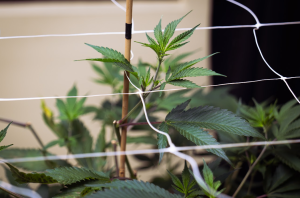Party Rockin’: Winter edition
Photo by Ryan Houston-Dial
January 29, 2021
As the end of January approaches and I look at the failed resolutions of those around me, it seems the easiest way to do this will be to divide the task into many smaller ones we can complete throughout 2021. We’ll spend winter getting ready for the rest of the year, so we can start the hard work in spring. For now, one of the best things you can do for yourself is simply saving money. You’ll likely need to buy plenty of supplies for the coming months, such as seeds, water pumps, and other necessities. If you can save an extra $50 each week from February to the start of spring, you’ll have $350 to put towards your new self-sufficient lifestyle. If you don’t have a job right now, don’t sweat it. I don’t either. $350 isn’t much for one completely self-reliant person, but trying to do everything yourself was never going to be an option. That’s where the community comes in handy.
As a broke college student, putting yourself through school is already expensive enough on its own; but get enough broke students together and suddenly you’re talking about buying an acre of land for the commune! Moving away to go live on a farm with all your friends may be a little extreme, but fostering a local community is integral to self-sufficient living. Knock on doors, meet your neighbors and tell them about what you’re doing. If they laugh in your face, just leave your number and move on to the next door. Start a group text and schedule weekly or monthly meeting times. You’ll learn what works best by working with the people around you. Once you’ve gathered everyone who’s interested in being a part of the community, you can figure out what each individual brings to the table. Some might already have skills in gardening or electrical engineering. Others will have money to contribute for supplies. Some can offer nothing more than their labor and time. Keep in mind that your community isn’t just a group of people you share resources with-its a group of people. Spend time getting to know the people in your community; make friends, find a date, and take interest in their lives. The relationships you foster here will benefit you in ways you can’t yet predict.
Lastly, you should take time to research and learn the skills you’ll need to sustain yourself in the spring. We’ll start growing food in the spring, so you should learn simple skills to help you plant and harvest your crops when the time comes. Insteading has guides for growing several individual crops, and Urban Farmers has a spreadsheet of vegetable planting dates in San Antonio. I recommend looking through both sites to determine which crops you’re going to plant next season. It’s important to pick a staple crop or the crop that will form the backbone of most of your meals. My staple crop of choice is potatoes—easy to grow with a variety of uses in the kitchen. There are several crops you can start growing inside now before transplanting them to the ground in the spring. If you want to learn the basics before you try your hand at vegetable gardening, you can grow flowers in a container inside, then transplant them to a community garden, your lawn, or wherever you’d like to see more life. We have all spring to plant and harvest, so don’t worry if you don’t have a chance to plant before then. You’re already ahead of the curve.








